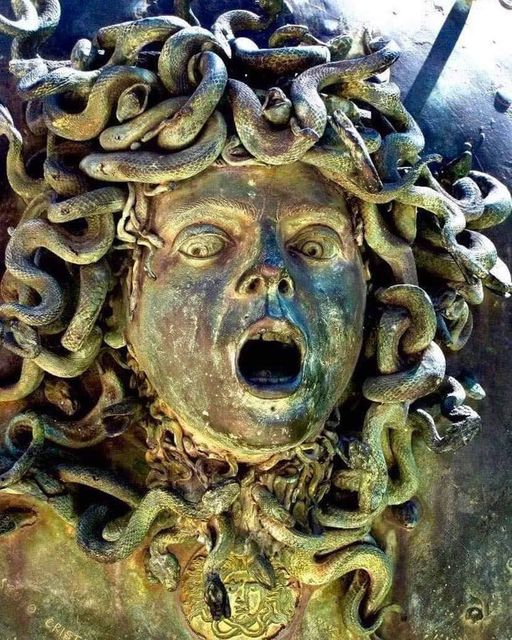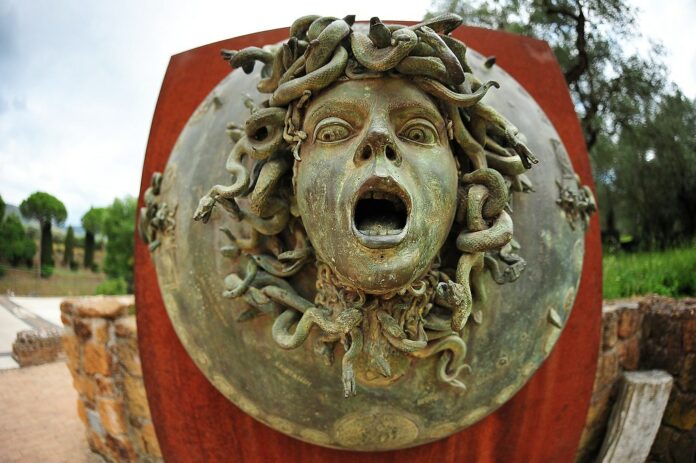Discovered at Hadrian’s Villa near Tivoli, Italy, the Bronze Head of Medusa is an exceptional example of Roman art. This artifact, steeped in Greek mythology, offers a compelling view of the cultural interplay between ancient Greece and Rome. Hadrian’s Villa, where the Medusa head was unearthed, is recognized as a UNESCO World Heritage Site. It is celebrated for its architectural intricacy and historical value, exemplifying the magnificence of Roman imperial architecture.
Medusa: A Mythological Protector
Medusa, one of the three Gorgons from Greek mythology, is a figure well-known for her fearsome appearance. She is typically depicted with hair made of snakes and a gaze that could turn anyone to stone, symbolizing both protection and intimidation. In Greek art, Medusa was often used as a protective symbol, her terrifying visage intended to repel evil forces. Her mythological power made her a significant figure in both Greek and Roman cultures, where her image served as a potent emblem.

Greek Influence in Roman Art
The portrayal of Medusa in Roman art demonstrates the enduring influence of Greek culture on Roman society. The Romans not only adopted Greek gods, myths, and artistic techniques but also integrated these elements into their own cultural framework. The Bronze Head of Medusa is a prime example of this cultural fusion, showcasing how Roman artists drew inspiration from Greek mythology and iconography to create their own unique works.

The Artistic and Cultural Importance of Hadrian’s Villa
Hadrian’s Villa is a symbol of the grandeur of Roman architecture and design. Constructed by Emperor Hadrian in the 2nd century AD, the villa is famous for its majestic buildings, detailed mosaics, and exquisite sculptures. The discovery of the Medusa head within this context enhances the historical and artistic significance of the site. It not only reflects the aesthetic tastes of the Roman elite but also illustrates the syncretic nature of Roman art, where Greek influences were embraced and reimagined.

Conclusion
The Bronze Head of Medusa from Hadrian’s Villa represents more than just an ancient artifact; it embodies the cultural and artistic exchange between Greece and Rome. It serves as a reminder of Medusa’s mythological power and the lasting impact of Greek mythology on Roman artistic traditions. Hadrian’s Villa, with its architectural splendor and historical depth, remains a source of wonder and provides valuable insights into the complexities of Roman imperial life and the enduring legacy of classical antiquity.




